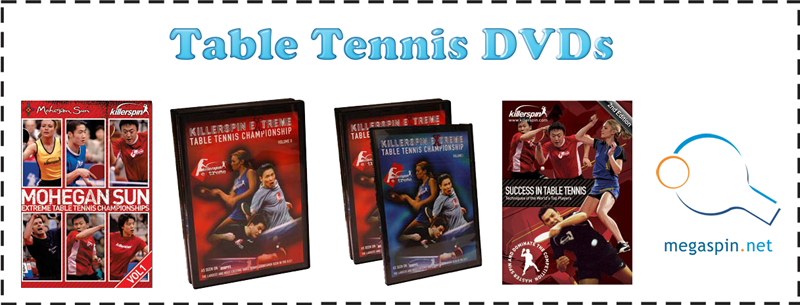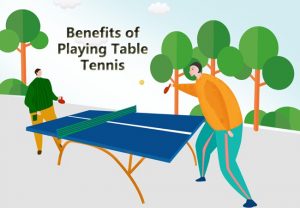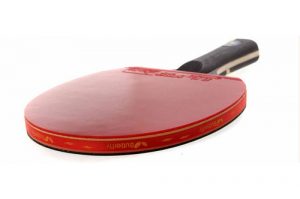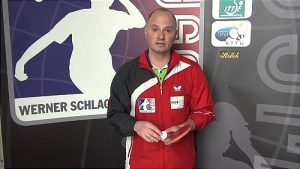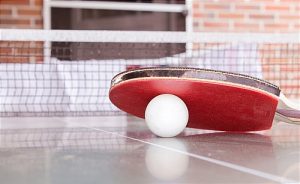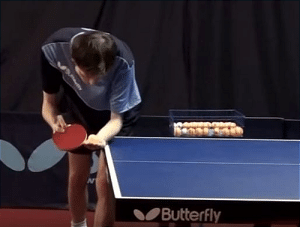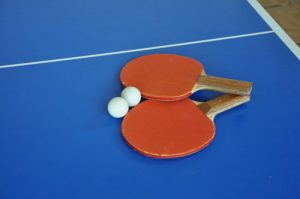Table of Contents
Holding the Racket
The two most popular ways to hold a racket is the Penhold grip and the Shake hands grip. Although it’s mostly the individual player’s preference, here are some of each style’s pros and cons.
The Penhold Grip:
At the spot, place your thumb where the ball meets with the handle index finger together like you are holding a pen so that the two fingertips are just touching each other.
Place your three other fingers on the other side of the paddle, and they can either be straightened out against the paddle or curled up.
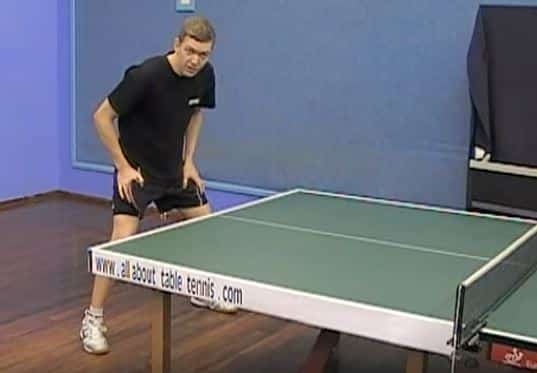
This grip is the best for forehand moves and worst for backhand because of the awkward position, unless you are super quick. The backhand is challenging to use, and the player is forced to use either front- or backhand for all moves due to this weakness.
Many players who use this grip may use one side to serve and then switch to the other side to use for play. Using this grip will make it easy to serve and return center shots. However, it will be hard to defend yourself properly and return passes aimed at places where you might not reach in time.
The Shake hands Grip:
Hold the racket, with the part you will be hitting the ball with away from you, on the handle, as if you were shaking another person’s hand.
Ensure that the thumb and index finger are on opposite sides of the racket, the index finger extended along with the handle and the middle finger along with the paddle, and the rest of the fingers curled around the handle.
Align the racket so that it is perpendicular to the floor. It should look like a straight line when you straighten out your arm.
Holding it this way is the most popular because it gives the best grip on the racket, hitting the ball the easiest. The thumb and index finger support the use of the backhand or the forehand, respectively, by giving it more stability when used.
It is also great for playing defensively and hitting corner shots. However, it is not so great at middle shots and some other shots due to the wrist being awkwardly placed.
Ready Stance
To be well balanced for the game, you need to stand appropriately to show you are ready to go. It would be best if you stood with your knees slightly bent.
You should nearly always be on the front part of your foot, which means you should keep your heels elevated as much as possible so that it is easier to bounce around. If you are right-handed, keep your right foot slightly behind your left foot and vice versa for left-handed people.
It allows you to move your body weight evenly between both legs and show that you are constantly ready. It will prepare you to be in an excellent position for either a forehand or backhand move.
Freehand
Your freehand is the hand that will not be holding the racket during the game. Use it to balance yourself throughout the game. It will help you the most when you have it parallel to your other arm.
Optimal Shots
To hit the ball precisely at all times, you should time it to hit it at the peak of each bounce. Timing is essential with each shot, so try not to be tricked when difficult shots come your way and are ready to recalculate the perfect time.
Playing Position
When playing, you should stay square to the line of play and not stand at the absolute center of the table. It means that you should position your shoulders and chest to face the area you want to hit the ball to. If you do this correctly, it will allow you to move quickly between shots and be ready for the next one.
When you are standing this way, know that if you are a right-handed person, you will be off-centered and be more on the left side of the table and vice versa for left-handed people.
The elbow of the arm holding the paddle should be held at the center of the table and centered so that it has to move an equal amount of space to hit the ball with either the forehand or the backhand. You should also stand to be in the relatively best area for your best type of play.
If you are right-handed and good at attacking, you should stand to the left as far as possible. Your opponent chooses to stand is also important because you must adjust to being best for you. For example, if they stand off to the left, you should move a bit to the right to give better coverage to your right.
Footwork
There are many stances for playing but knowing a few basics should help you get where you want to go. To improve your footwork practice, always remember to keep on your toes so that you are ready to move into a new position and move only after the other player has hit the ball, not to see where you are going and decide to aim for the other side.
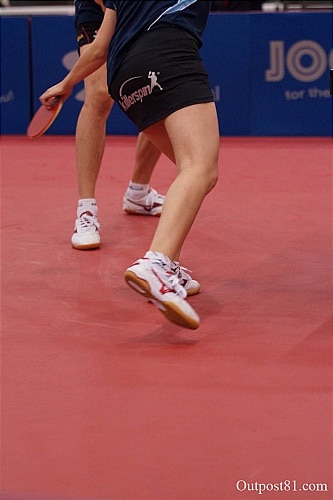
To move quickly from side to side, learn to do the following few steps quickly so that you won’t be tripping over your own feet when you move. If you will move towards the left, move a few inches to the left with your left foot, then shift your weight onto your left foot and then bring your right foot to the left the necessary inches.
Moving to the right requires doing the same thing, switch all the lefts to rights, and vice versa. If you are moving to deliver a better front hand, move your right leg if you are right-handed so that it is slightly behind the left foot.
Five Ways To Improve Your Reaction Time
You can have the most excellent table tennis technique in the world, but if your reaction time is poor, then you will still get burned. Here are five ways to improve your reaction time:
1. Most tables can fold up, creating a backboard for you to hit against. An effortless way to improve reaction time is by hitting up against the board over and over again.
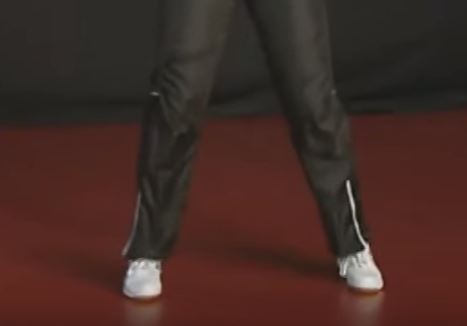
However, make sure to switch up where you place the ball on the board, so you aren’t just hitting the same shot over and over again.
2. When you are playing with a friend, and you are just messing around, hit every single shot that you can, no matter if it hits the table or not. Try to keep the ball going as long as you can. Play it off the ground, off the wall, or just out of the air.
3. Another thing you can do with a friend is to play short table tennis. Move your body up to the edge of the table and play a game without moving your body away from the edge of the table. It will force you to react quickly to all shots.
4. A fun way to practice when you don’t have someone else to play with, and you are sick of playing against the backboard is to play with the walls and everything else around you.
Move to the side of the table and hit the ball against the wall or whatever else is around so that it will come back to the table. It is fun because the variability of where the ball is going to go helps you learn to react quickly to random shots. Plus, it’s fun to try to keep it going as long as you can.
5. Reaction time and hand-eye coordination are two different things but must work together. You might be able to react quickly to the ball coming at you, but if you can’t make the proper connection with the ball, then it serves no purpose.
Practice just hitting the ball up and down on your paddle, almost like it was attached with a string, and keep it going as long as you can. When you get better at that, switch it up by flipping the paddle around and shortening the bounce.
You may want to click the link for more Table Tennis Tips

Warren Davies

